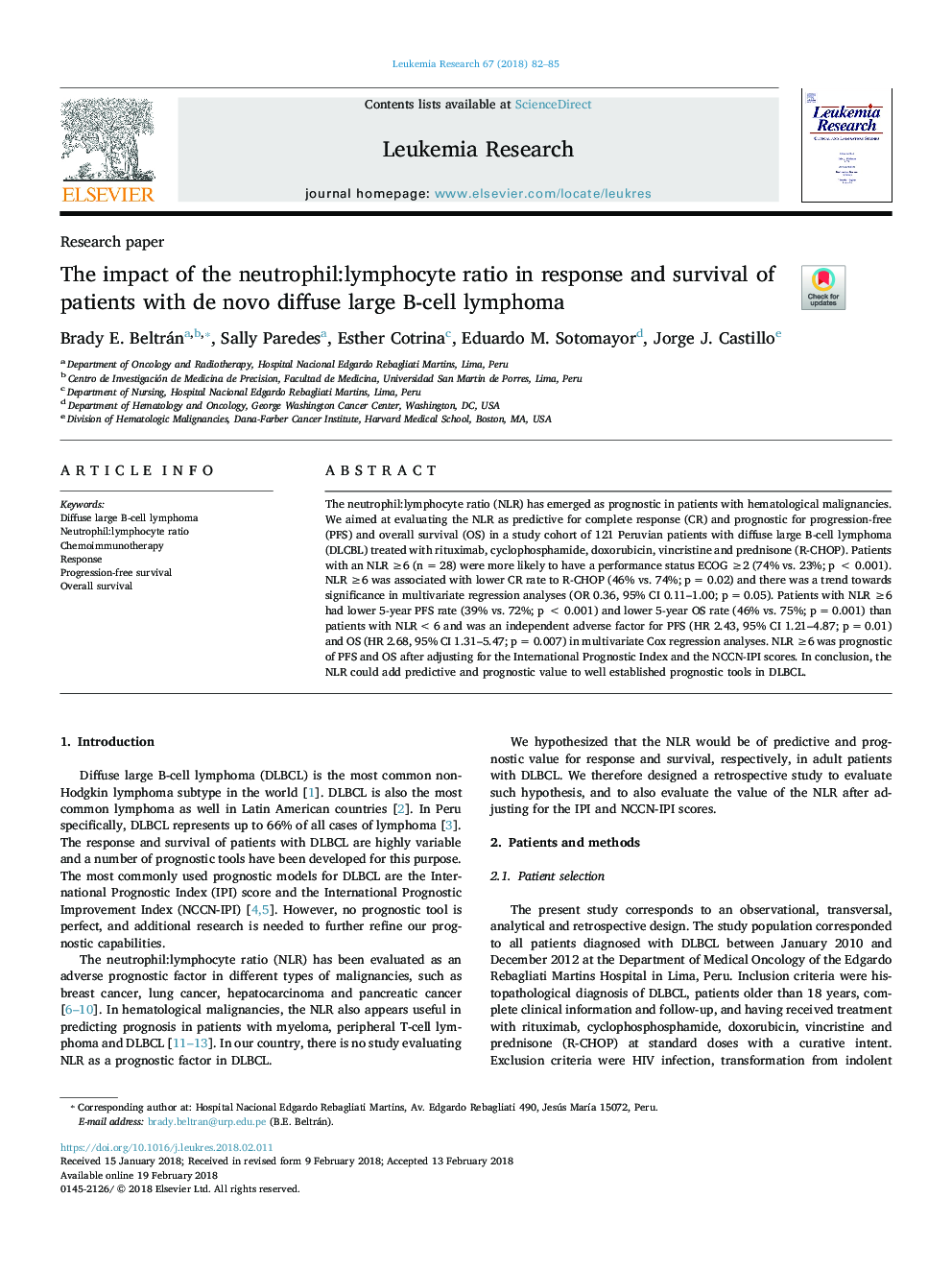| Article ID | Journal | Published Year | Pages | File Type |
|---|---|---|---|---|
| 8453362 | Leukemia Research | 2018 | 4 Pages |
Abstract
The neutrophil:lymphocyte ratio (NLR) has emerged as prognostic in patients with hematological malignancies. We aimed at evaluating the NLR as predictive for complete response (CR) and prognostic for progression-free (PFS) and overall survival (OS) in a study cohort of 121 Peruvian patients with diffuse large B-cell lymphoma (DLCBL) treated with rituximab, cyclophosphamide, doxorubicin, vincristine and prednisone (R-CHOP). Patients with an NLR â¥6 (nâ¯=â¯28) were more likely to have a performance status ECOG â¥2 (74% vs. 23%; pâ¯<â¯0.001). NLR â¥6 was associated with lower CR rate to R-CHOP (46% vs. 74%; pâ¯=â¯0.02) and there was a trend towards significance in multivariate regression analyses (OR 0.36, 95% CI 0.11-1.00; pâ¯=â¯0.05). Patients with NLR â¥6 had lower 5-year PFS rate (39% vs. 72%; pâ¯<â¯0.001) and lower 5-year OS rate (46% vs. 75%; pâ¯=â¯0.001) than patients with NLR <6 and was an independent adverse factor for PFS (HR 2.43, 95% CI 1.21-4.87; pâ¯=â¯0.01) and OS (HR 2.68, 95% CI 1.31-5.47; pâ¯=â¯0.007) in multivariate Cox regression analyses. NLR â¥6 was prognostic of PFS and OS after adjusting for the International Prognostic Index and the NCCN-IPI scores. In conclusion, the NLR could add predictive and prognostic value to well established prognostic tools in DLBCL.
Keywords
Related Topics
Life Sciences
Biochemistry, Genetics and Molecular Biology
Cancer Research
Authors
Brady E. Beltrán, Sally Paredes, Esther Cotrina, Eduardo M. Sotomayor, Jorge J. Castillo,
